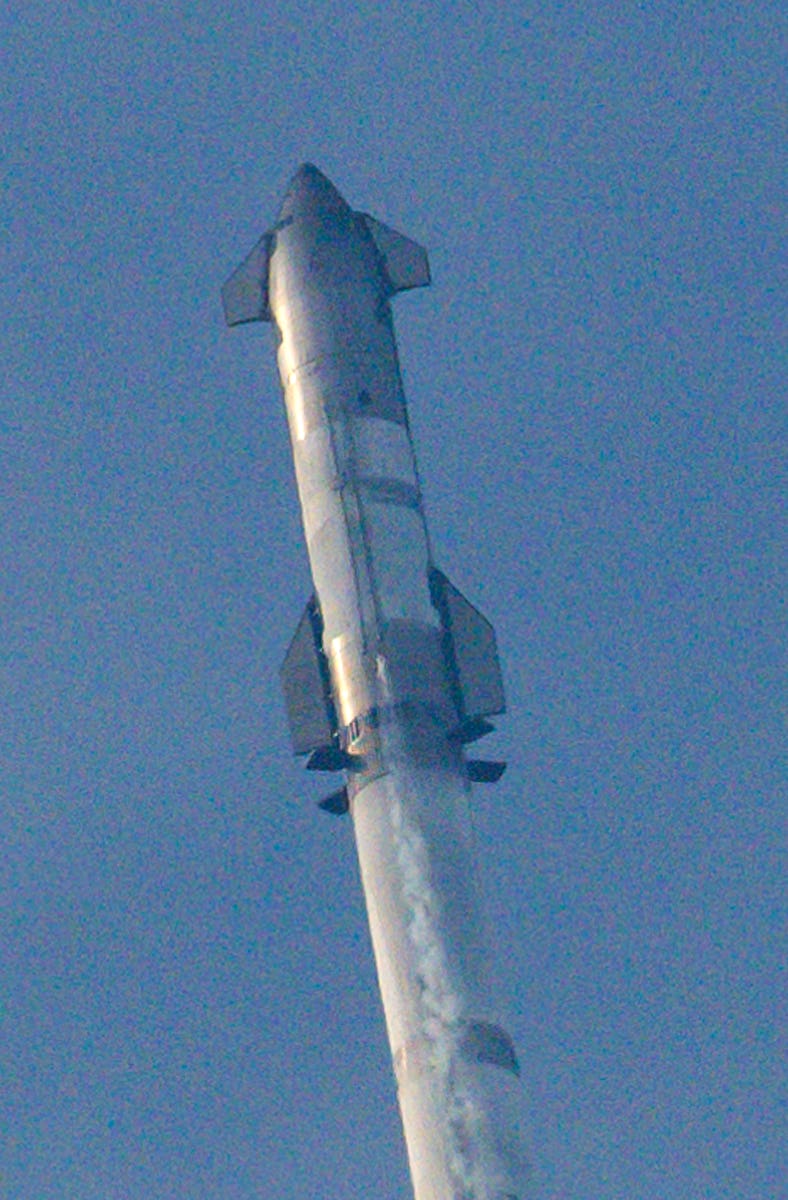SpaceX's Starship Perished In a Haze of Plasma — Here's When the Next Launch Could Be
What goes up must face super-hot atmospheric plasma to come down.

SpaceX’s Starship rocket, the most powerful ever built, successfully reached space for the second time on Thursday. After the mighty first-stage booster Super Heavy delivered Starship into Earth orbit, the rocket achieved many firsts. But it also fell short.
The 397-foot-tall orbiter ended its test flight after flying longer and faster than ever before. It perished after entering Earth’s atmosphere during reentry and crashing into the Indian Ocean.
Unlike the last flight test in November, Starship survived long after separating from Super Heavy. Starship then entered Earth orbit for the first time, having crossed the designated border into space known as the Kármán line. It climbed to an altitude of at least 234 kilometers high and sustained speeds of more than 26,000 kilometers per hour. Following several tests and test omissions, Starship sent its last telemetry about 49 minutes after launch.
SpaceX is inching towards its own-established finish line. The Thursday flight was the third attempt for Elon Musk’s company to get the rocket into the sky from their Starbase launch facility at Boca Chica, Texas, by the Gulf of Mexico, and for Starship to take a 90-minute flight. But to be ready to carry hefty cargo and passengers on trips to deep space, Starship needs more work.
What happens next?
SpaceX will assess the results of Thursday’s flight.
According to SpaceX’s presentation during Thursday’s test, Super Heavy did well, and SpaceX views this launch as a success. It ignited its 33 Raptor engines upon takeoff, and minutes later it successfully performed critical maneuvers. But it didn't quite complete its final maneuvers before it splashed down in the Gulf of Mexico.
Super Heavy is designed to be reusable, so subsequent testing will attempt to get the booster to land back on Earth like the much smaller SpaceX Falcon 9 boosters regularly do now.
Starship aced payload and payload door test during Thursday’s flight. SpaceX officials said they will need to review the data to confirm how well it performed. Starship is designed to carry 100 to 150 tons of cargo into space, a massive increase compared to its current International Space Station ferry, Dragon, which can deliver 13,000 pounds into space.
Starship also has to test out its ability to reignite its engines from microgravity in space, after the first burn and after entering a coast phase. It’s called the on-orbit re-light demo. On Thursday, Starship’s software skipped the test. One possible explanation is that Starship’s orientation in space wasn’t ideal for sudden changes in velocity.
Starship will need to do that test in the future. The reignition of Starship’s six engines is critical for future in-space maneuvers, like achieving a good deorbit burn to get the craft to land on Earth someday, or to get it going on a journey into deep space.
Thursday was also important because it was the first reentry test for Starship.
Its hypersonic reentry was more than five times the speed of sound, according to SpaceX. Much like launch, reentry packs a lot of dramatic phenomena in just a few minutes, which the team is still learning about. They’ll evaluate data about Starship’s motion control and the heat shield, which work in tandem to keep the heat shield facing downward to protect the spacecraft.
The team may create new models of the plasma field, too. The presenters in SpaceX’s Thursday broadcast said the massive size of Starship would hopefully prevent the plasma of reentry from enveloping the craft, but moments later, that’s just what happened.
Beyond the spacecraft
Next, the Federal Aviation Administration (FAA) will get involved. SpaceX will need their permission to fly again. And then along the way, some other things might be happening.
The Starship rocket launching on March 14, 2024 from Boca Chica, Texas.
SpaceX makes changes to each of their subsequent flights. They’re to address issues that happened previously, but the solutions might have their own consequences.
For instance, the first Starship flight in April 2023 resulted in the destruction of the launchpad’s foundation. Debris went flying because the power of Super Heavy’s 33 Raptor engines, and 16.7 million pounds of thrust, overwhelmed the structure. To address this issue, SpaceX’s second flight introduced a steel plate metal sheet that would create a barrier between the engines and the foundation. It works in tandem with a water deluge system to cool the surface down. Thursday’s flight would have been only the second time this system is evaluated and may have provided the team with new insights about how successful their metal plate is at protecting the launchpad.
The water component of this cooling system is also something to assess. According to an FAA report published after the first test, SpaceX personnel must test the water in the collection tanks after the launches to measure for any toxins or heavy metals present, which could have been released through a process called ablation as the high heat of the Raptor engines smashed into the metal plate, and mixing with the vapor or the liquid water.
These are some of the environmental assessments that SpaceX is required to perform more broadly to determine what negative effects the acute, powerful launches have on the surrounding coastal region, and how to address or restore them.
Starship’s future is yet to be seen, but testing has so far been beyond anything we’ve ever seen before.